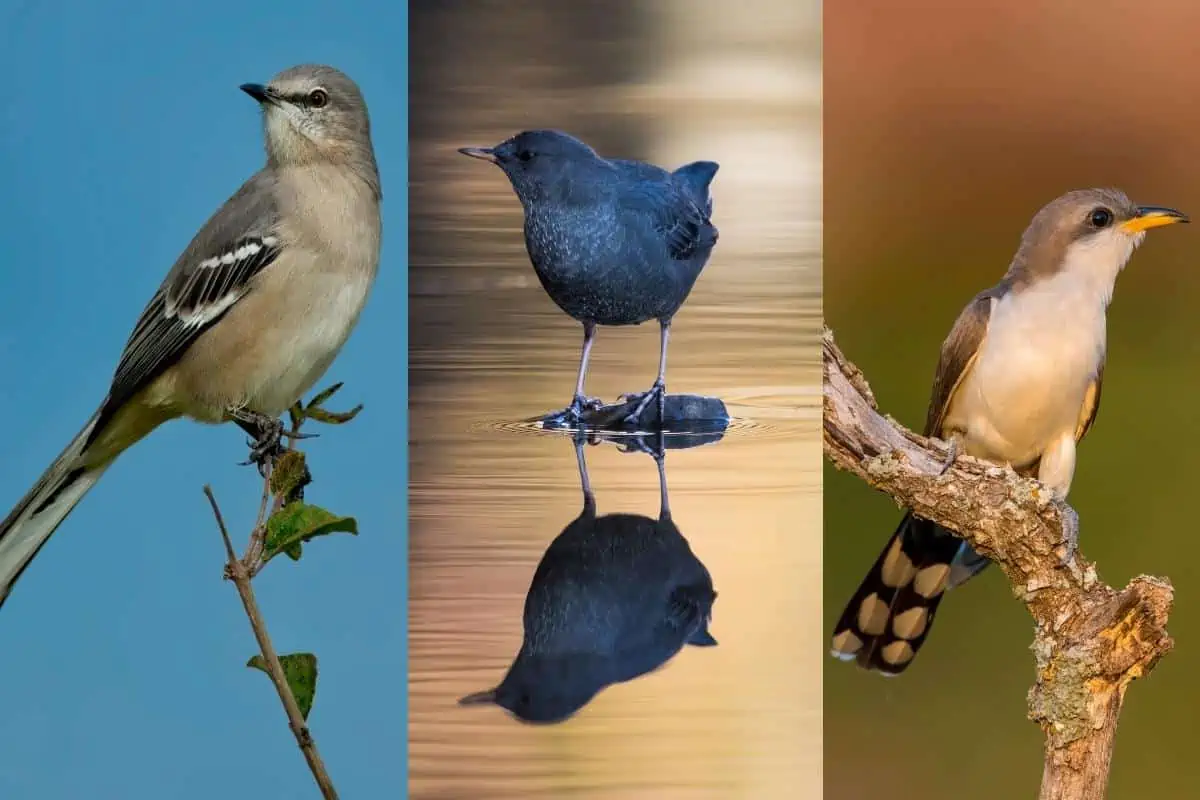Gray birds aren’t as visually striking as vividly colored birds, but they have their own allure. There is a gray bird for every area and setting of the United States, from delicate singers to underwater swimmers. We’ll explore 15 types of gray birds, their habitats, diets, and how to attract them to your yard in this article.
15 TYPES OF GRAY BIRDS
1. TUFTED TITMOUSE

Scientific name: Baeolopus bicolor
In the eastern United States, where they live year-round, the Tufted Titmouse’s gentle tweeting is a welcome wake-up call. The head crest, black mark over the beak, a pale belly, and a suggestion of orange down their sides under the wing distinguish this gray-blue bird.
During the summer, they consume insects, and during the winter, they consume seeds. They store seeds for use during the winter, similar to other species.
Sunflower seeds, mixed seeds, or even suet can all be used to attract them to your yard. You’ll see them grabbing one seed and flying away to add it to their stores throughout the autumn and winter in your backyard.
2. SANDHILL CRANE
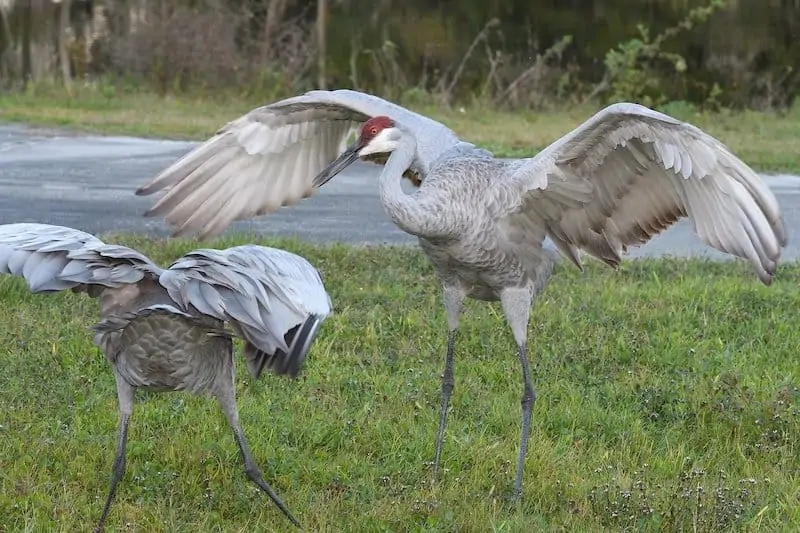
Scientific name: Antigone canadensis
This is a bird that exudes both grace and dignity. Sandhill Cranes have long legs and necks, and stand nearly 4 feet tall. Adults have a bright red patch on the head and are mottled gray and brown. Large flocks may be seen dancing and trumpeting their voices throughout the breeding season.
In open wetlands, fields, and prairies in Alaska, Canada, and the northern United States, populations breed. In the winter, they migrate south to Florida and Texas, while a tiny group resides year-round along the Florida-Georgia border.
Seeds and grains, insects, reptiles, and amphibians are among the foods they consume.
3. GRAY CATBIRD
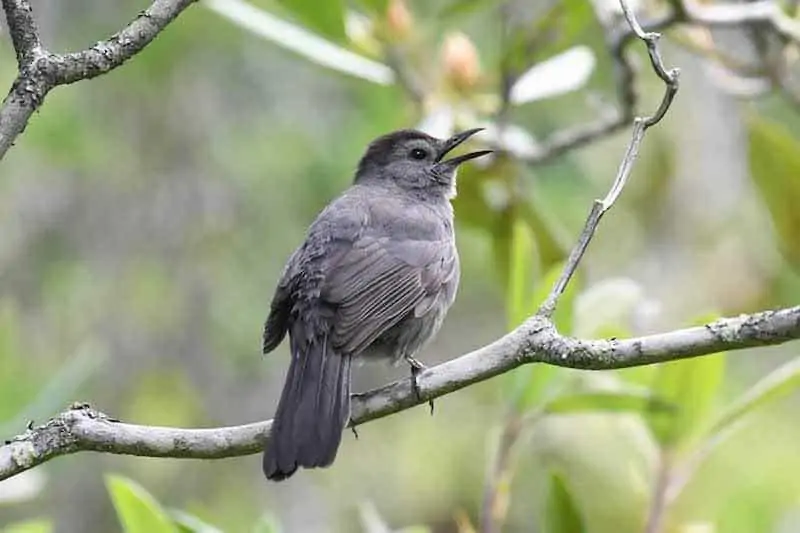
Scientific name: Dumetella carolinensis
The call of this bird is strangely similar to that of a cat, therefore it was given the name. The retiring Gray Catbirds prefer to dwell deep inside the foliage of a well-foliated tree, where they are safest. They are, however, not bashful about singing. They imitate the noises of different bird species and mix them together in a lengthy melodious song when not performing their “meow” call.
4. WILLOW FLYCATCHER

Scientific name: Empidonax traillii
The Willow Flycatcher is another gray bird that is difficult to distinguish. Because it appears to be similar to other flycatchers, use its call to narrow down the species. The bird calls “fitz-bew” repetitively while perched in thickets, particularly willow thickets.
They’re available throughout the United States in the spring and summer, with the exception of the Southeast. In the winter, they go to Mexico, Central and South America. In May and June, when they are at their most vocal, listen for the Willow Flycatcher in damp meadows with willows.
5. EASTERN PHOEBE
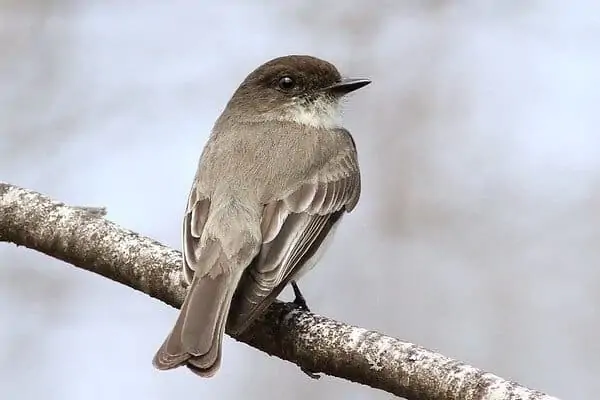
Scientific name: Sayornis phoebe
They’re a well-known flycatcher species, particularly in North America. Hear the distinctive cry “fee-bee,” which is a well-known sound in the eastern United States. During the winter, they breed in the north and move south to spend it.
Around human structures, eastern Phoebes will construct nests, especially bridges. Their back and head are gray, with their head being a little darker. They have a little yellow tint to their belly.
They aren’t likely to visit a bird feeder since flycatchers eat the majority of their food on the wing. Make sure you have plants and trees that attract insects in your yard to attract them.
6. MOURNING DOVE

Scientific name: Zenaida macroura
The common, ubiquitous Mourning Dove is a migratory bird that visits every state in the union. They’re recognized for their dismal nests, moaning cry, and bobbing gait as they walk, and they survive all year except in the northern Midwest.
Having a ground feeder or scattering seed around will quickly attract Mourning Doves since they prefer to eat on the ground. They’re likely to come if you have a bird feeder up, looking for spilled seed in the grass below.
7. GRAY KINGBIRD

Scientific name: Tyrannus dominicensis
The flycatcher spends his summers on the southern coasts. It perches on barbed wire, exposed twigs, and telephone lines throughout the breeding season along the Florida coast. Insects are chased through the air for several minutes by these hunters, who use intense chases.
The voice and behavior of Gray Kingbirds has earned them a reputation as boisterous. Their large black beak helps them stand out, despite their dull gray back and white front.
8. AMERICAN DIPPER
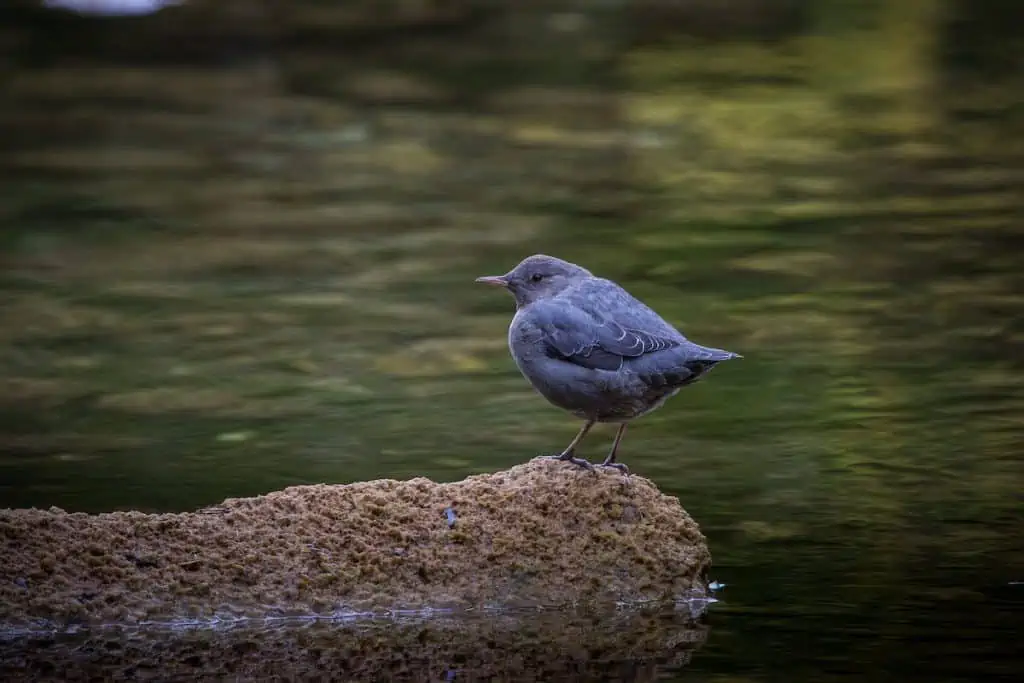
Scientific name: Cinclus mexicanus
The only aquatic songbird in North America is the American Dipper. In order to reach their chosen prey, invertebrates that dwell in mountain streams’ rocks and silt, they must swim. Seeing an American Dipper swoop in and out of the water to grab a snack is a miracle.
In the western United States’ mountain areas, you may spot them. With their rounded body and very short tail, they are easy to identify. In fast-moving streams, locate them on top of rocks and logs, bobbing up and down with their bodies.
9. TOWNSEND’S SOLITAIRE
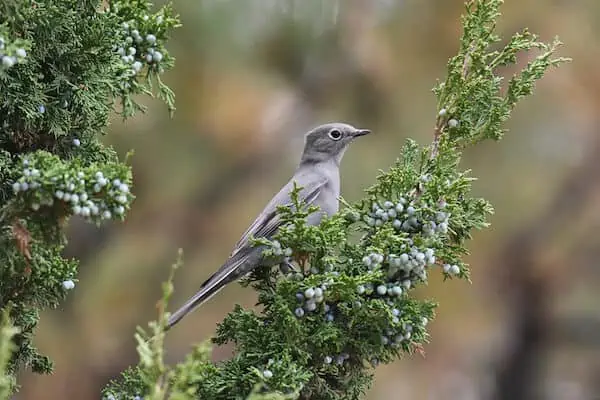
Scientific name: Myadestes townsendi
The Townsend’s Solitaire is anything but plain, despite its grey feathers. It has black-grey tail and a white eye ring with grey and white-mottled feathers. In the high country, where they reside year-round, their rolling jumbly song may be heard. Townsend’s Solitaire sings all year, despite the fact that many birds only sing during breeding season.
Plant winter-fruiting berry bushes, particularly juniper, in your yard to attract them. In the winter, berries account for a significant part of the bird’s diet.
10. SNOWY PLOVER
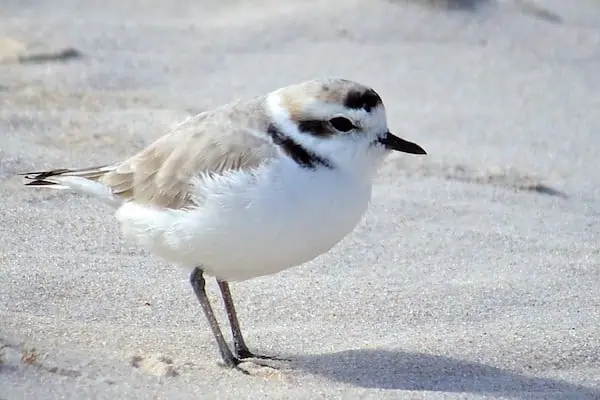
Scientific name: Charadrius nivosus
The shores of coastlines across the United States are home to the gray and white Snowy Plover. During the summer, they may be found across the West and Central South, from the Pacific to the Gulf.
A great way to locate a Snowy Plover is to sit in a excellent view location and wait because they seldom stop moving. They search for insects and crustaceans along the beach. Because their nesting habitat is along beaches that are frequently disturbed by development and other human recreation, they are a near-threatened species. To help this species, walling-off protected areas is sometimes used.
11. ROCK PIGEON

Scientific name: Columba livia
Rock Pigeons are truly urban birds, and they’re frequently referred to as “pigeons.” These birds can be found all throughout the globe, from the contiguous United States to Alaska, as well as in Mexico and the Caribbean. You’ll see them in cities and in parks where they can forage for food scraps, and they’re often gathered in flocks.
If you scatter food on the ground, they’ll readily visit yards. Cracked corn, peanut hearts, milo, millet, and sunflower can all be used to feed pigeons.
12. NORTHERN MOCKINGBIRD

Scientific name: Mimus polyglottos
In the United States, the Northern Mockingbird is ubiquitous. When trying to identify one, its ability to mimic the songs of up to fifteen different species comes in handy. In a long stream of song, they repeat the call of each species two to four times before moving on to the next. When perched, they constantly flick their tails, and when they fly, you’ll notice their enormous white wing-bars and tail edges.
Planting fruiting shrubs and trees may entice a mockingbird to visit your yard, which is uncommon at a feeder. They may fiercely squawk and even dive-bomb anything that comes too close if they decide a tree in your yard is their home base.
13. CANADA GOOSE

Scientific name: Branta canadensis
The Canadian Goose, often known as the villainous Canada Goose, is a native of Canada’s north. Human activity has expanded the amount of open fields and yards that Canada Geese prefer, so it migrates between those grasslands and the southern United States.
If you have Canada Geese on your property, they may be aggressive and disrupt other birds. It may be preferable to leave them be depending on your area. With their broad bulk, long black necks, and white cheek patch, they’re difficult to miss. When enormous flocks gather in a location and abandon their droppings, they can be loud and filthy as well.
14. LOGGERHEAD SHRIKE

Scientific name: Lanius ludovicianus
The Loggerhead Shrike is known for impaling its meal (mice, reptiles, amphibians, and insects) on spike objects or wedging them into tight openings. They might be twigs with sparse barbs, tree bark crevices, or anything else. Like raptors, they are powerful hunters and can carry prey in their feet.
In the southern states, and up north in the spring and summer, you may see their handiwork year-round. Its body is light gray, with black wings and a black eye mask.
15. YELLOW-BILLED CUCKOO
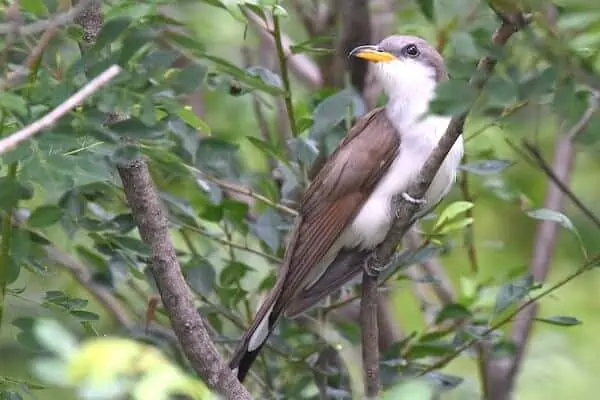
Scientific name: Coccyzus americanus
Throughout the spring and summer, the Yellow-billed Cuckoo may be found in the Great Plains and Eastern United States. Because of their black and white polka-dot tail, you can recognize them when they’re perched. With a white throat and belly, and a yellow beak, they have a long and lean appearance.
These cuckoos like to wait beneath tree foliage while hunting for caterpillars, remaining motionless. Listen for their call or look for their lengthy dotted tail hanging down. Their knocks and hoots have a similar tone to them.
